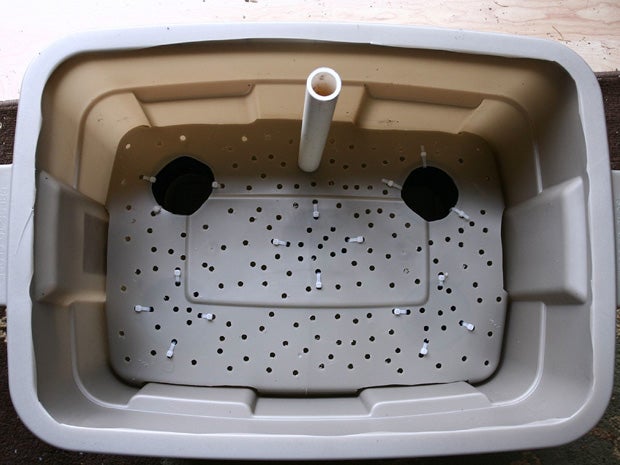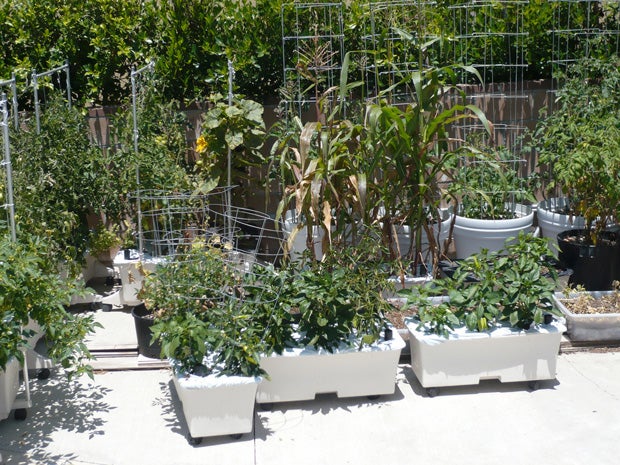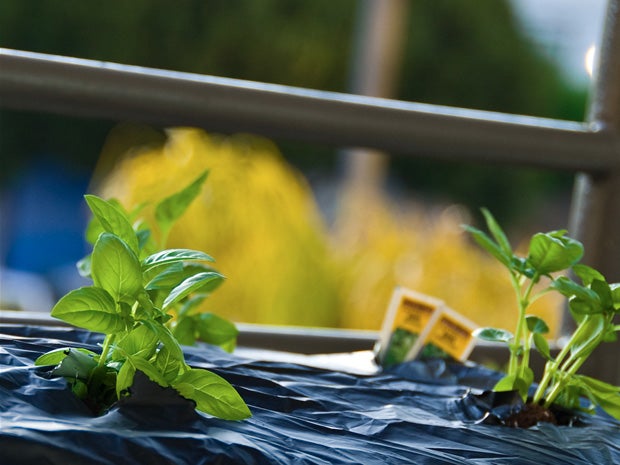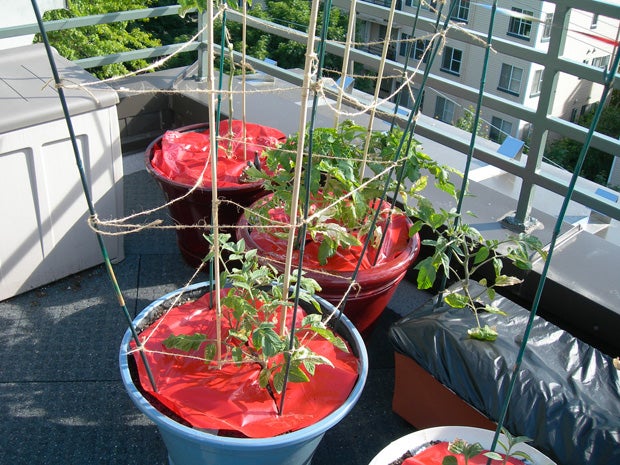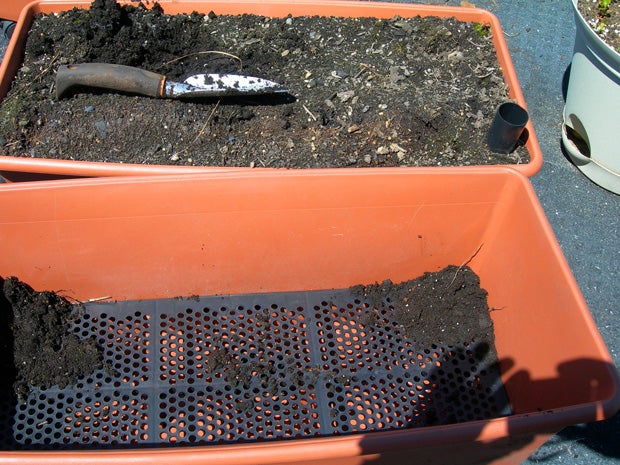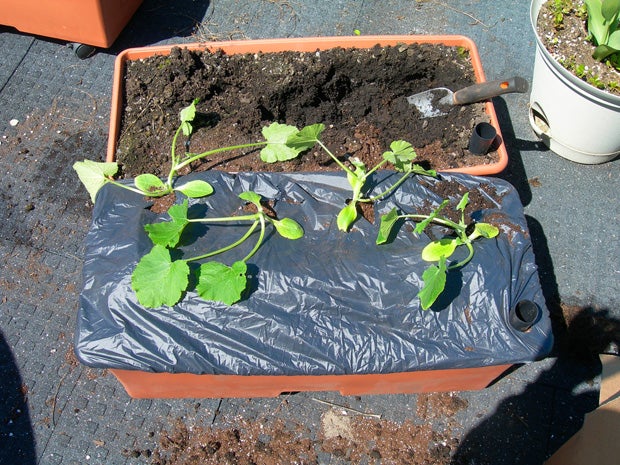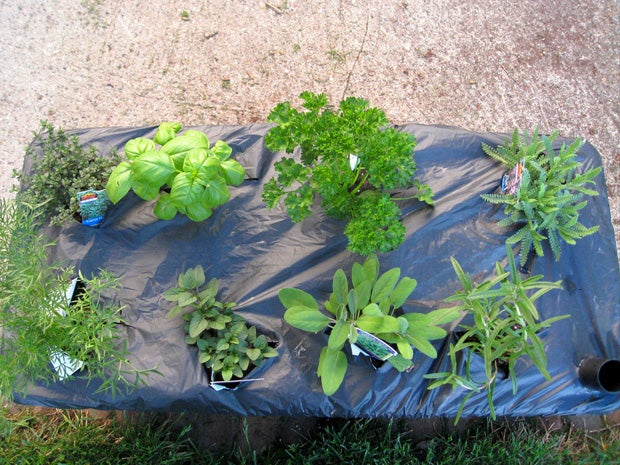Getting married this summer? Grow your own bouquet!
ListenMike McGrath talks about protecting your garden from extreme sun and heat, the best way to treat an ailing azalea, using coffee grounds in the garden, incorporating animal manure into compost, what to grow in earthbox gardens, how to get larger produce from fruit trees, guarding against moles and voles, and how to grow your own wedding bouquet.
Question of the Week:
I’m getting married on August 24th, and would like to grow some of my own flowers for the wedding. What can I plant over the next few weeks that would bloom abundantly in late August? Specifically, I’d like plants with sturdy stems that will hold up in arrangements and bouquets. I’d also welcome any suggestions in terms of staggering plantings to make sure we have something to cut that week. At the very least, I would like to have flowers blooming at our house, as we’ll have lots of people coming through.
Now, I acknowledge that female wedding hysteria is a real risk. But I have a vegetable garden, grew up gardening with my parents and grandparents, my fiancé and I are avid do-it-yourselfers, we’ll have help from friends and family, AND this is the only major project I plan to personally undertake.
— Julia in Collegeville, Pennsylvania
Learn how to grow your own wedding bouquet »
-

Photo by Flickr user Lea Ann Belter
Highlights from show for June 1, 2013:
Protecting a garden from extreme sun and heat
Margaret from Orlando, Florida has a vegetable garden that is about two years old and gets more than enough sun. Sometimes too much, given the hot climate down South. Margaret set up a system of umbrellas around her garden that she opens up to cover the plants in the early afternoon everyday. “You are an unusual caller, Margaret, in that you’re doing exactly the right thing. You’re doing what the professionals do,” Mike acknowledges. Indeed, gardening professionals set up what are called shade cloths for their plants in warm climates. This material allows a certain amount of sun through to the plants while also protecting them from the dangerous summer heat. Mike encourages her to look into shade cloths that may be designed for home use.
Using duck droppings in compost
Michael from Folsom, Pennsylvania wanted to know if he could use the manure from his Peking duck in his garden as compost material. The duck’s remains are often left in the kennel on towels, but Mike asks him to consider putting straw down outside the kennel and collecting it that way. Mike says: “I would just mix it in [to the compost pile]. Animal manure like these are said to make the absolute finest compost. They will heat up your compost pile, they will make the compost faster, and finished compost will be finer quality.”
“Animal manure like these are said to make the absolute finest compost. They will heat up your compost pile, they will make the compost faster, and finished compost will be finer quality.”
Mike McGrath
-

Photo by Flickr user cynicalview
Adam’s azalea
Calling from Portsmith, NH, Adam has an azalea that isn’t looking so good. It is about two thirds bloomed and it is losing its leaves faster than Adam is losing his hair! The leaves are greenish yellow with brown edges. It gets full sun all day long, and he is looking for some tips on moving it to a shady area on the other side of his house. Mike recommends letting it bloom, and after it is done flowering to reduce the volume by about a third to stimulate new growth. He should hydrate the plant before he plans to move it, which is best to do in the evening around 5pm.
“When you dig this puppy out of the ground, you want to start at least a foot away from the trunk, maybe a foot and a half, get a bunch of guys with shovels to surround it, and keep putting the shovels into the ground. Ideally you want to bring up an island of soil, you want to try not to just bring up the bare roots,” Mike says. In addition, Adam should try to dig as deep as he can, “until it starts to feel warm and you hear the screams of the souls of the damned”!
Afterward the big move, Mike advises to leave a hose dripping at the base of the plant for 24 hours. “I think if you do that, you’ll see success right away…there’s no reason it shouldn’t bloom next season,” Mike says.
Using coffee grounds in the garden
Thomas in Knoxville, Tennessee, goes through one to two cups of coffee grinds a week and would like to find a way to use them for his rhododendrons and azaleas. Since coffee grounds are highly acidic and nitrogen composed, it can promote growth but inhibit flowering. Mike suggests that he put his coffee grounds right onto the soil in the early spring when the flower buds are already formed, coffee grounds can be put right on it. In addition, yellowing leaves can indicate that the plant needs more acidity, so that would also be a time to apply it. However, coffee grounds should not be used on house plants or herbs because they thrive best in neutral pH levels.
Earthbox tomatoes
Fran from Southport, North Carolina has an earthbox with grafted Cherokee Heirloom tomatoes. These are small growing containers meant to be self-watering. Although Mike isn’t the biggest fan of them, he recommends that Fran treat the water with BTI because the stagnant water will attract mosquitoes.
In the past, he would have suggested that Fran plant smaller determinant tomatoes in the earthbox, “But I have to warn you,” he says, “Cherokee Purple are one of the best tasting varieties, one of the most colorful. But all of these older heirlooms produce late in the season, and they have ten to twelve foot, sometimes even fourteen foot long vines and if you just keep cutting the plant back, you greatly limit or may even not get any tomatoes.”
Mike continues to explain that the graft must remain above ground so that you can always see it over the soil. In addition, a great support for that long vine may be, for instance, letting it hang off of a second deck patio to give it proper air circulation.
Slideshow below: Earthbox gardens
How to get larger produce from fruit trees
Mike in Ohio wants to know the best way to care for his apples and pear trees that are growing very small fruits and if there are any homemade pesticides he could apply to them. Being that fruit trees are very time consuming, pruning is an essential element to proper care in order to give the tree more energy. “It’s getting late to prune them, but I think it’s better to prune them than not,” Mike advises. Three quarters of the apples need to be removed and then “the first chance you get I would go in there, I would get a good set of pruning tools right away, and take out just some branches, some that seem overly full that are in the center of the plant, and then read up on fruit tree pruning and be ready this coming winter and early spring.”
Mike explains that pruning the pear trees is also the trick to revitalizing them. In terms of pesticides, the only one he would recommend at the moment is Surround, a nontoxic powdered clay. Once the apples are about half sized, the apples can be sprayed with it to keep away pests. At harvest, it can be simply washed off of the fruits.
Getting rid of moles and voles
Moles and volesare infesting John’s yard! John, from Egg Harbor Township, New Jersey, has been using chemicals to get rid of them, but “No more of that,” Mike says. John can set up rapture perches which are crossbeams so that hawks and owls will visit his property and take care of the vermin problem, since they are their biggest predators. He can also use castor oil products that put a very strong and concentrated odor in the area. It doesn’t kill them, but will drive them out of the area. To target voles, simple mouse traps could be used.
-

Vole sneaking into the garden. Photo by Flickr user hockadilly
— This week’s post was written by Jolie Higazi, You Bet Your Garden Intern
WHYY is your source for fact-based, in-depth journalism and information. As a nonprofit organization, we rely on financial support from readers like you. Please give today.


